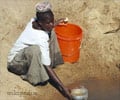Types
The cause of fever can be diagnosed from the pattern and associated features.
The pattern of fever may vary in different conditions and could assist in the diagnosis of the cause of the fever. Some of the types of
Continuous fever: Fever that does not fluctuate more than 1°C in 24 hours is called continuous fever. It is seen in conditions like pneumonia,
Remittent fever: Fever that fluctuates more than 1°C in 24 hours is referred to as remittent fever. Causes include typhoid and
Intermittent fever: Fever that is present only for some time in the day is called intermittent fever.
Hectic or septic fever: Fever variation between the highest and lowest temperatures is very large and more than 5°C. This type of fever is seen in
Pel Ebstein fever: The febrile and afebrile periods alternate and follow a definite pattern. For example, in Hodgkin’s disease and other lymphomas, fever for 3 to 10 days is followed by a fever-free period of 3 to 10 days, with the same cycle repeating.
Low-grade fever: The fever does not exceed 37.8°C and is present daily especially in the evenings.
Fever with rigors: Rigor is the shaking or excessive shivering that accompanies fever. Fever accompanied with rigors are seen in conditions like malaria, kala azar,
Fever with herpes labialis: Fever sometimes results in activation of herpes simplex virus. This results in small fluid-filled boils at the angles of the mouth. Fever with herpes labialis is seen in pneumonia, malaria,
Fever with rash: Fever with rash is often seen in viral infections like
Fever with membrane in throat: Febrile conditions that could result in the formation of a membrane in the throat include
Fever with delirium or altered consciousness: Delirium with fever could occur in conditions like














